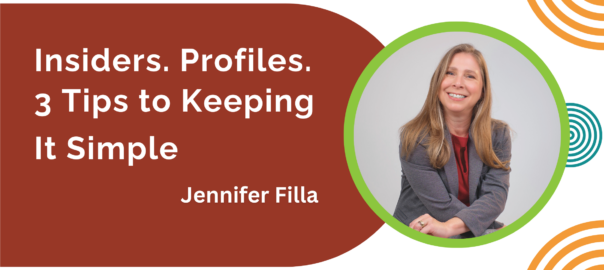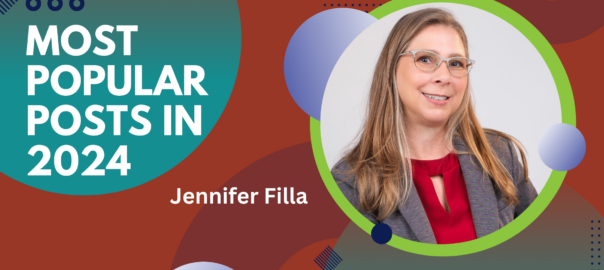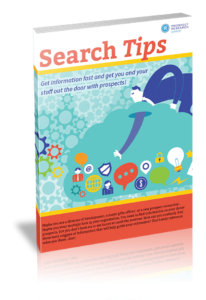Did you know that your organization might be missing major gift donors? There is a major gifts trend happening in organizations across the United States and it may well apply enough pressure to burst through outdated thinking and unleash the power of the missing major gift donors. Will you and your organization be among the early innovators and adopters?
Fundraising leadership is waking up to the reality that technology keeps promising instant identification of major gift prospects, but is not delivering, especially when it comes to wealthy women and people of color. And some of the best, most transformative donors are missing – hidden among all the other donors.
Why can’t the tech companies wave their magic rating wands and deliver the prospects?
Because the very best data is locked up inside the donor. Because technology can’t create messaging and relationships with donors that will unlock the mega gift.
Who can’t help but love the story in the Chronicle of Philanthropy about the retired clarinetist, Edward Avedisian, who gave $100M to his alma mater, Boston University? The only meaningful data points were Avedisian’s giving history to the organization and his desire to give that he expressed to the development officer – who listened and acted. Is she ever glad she did!
But if the data can’t find and rate the next best megadonor from your organization’s donor list, what is a savvy development professional to do?
Remember that data supports fundraising relationship strategies – it is NOT the strategy.
Back in 2015, research professional, Preeti Gill, challenged me to research the woman first when profiling. It was a simple demand and it shook me out of my routine enough to realize how biased Aspire had been in its approach to researching households!
Read Preeti Gill’s story in “What About Women?” a free PDF download.
Preeti argued that there was a huge transition of wealth to women and fundraising was ignoring these women. And she was right. Conversations with researchers in the next few years were fascinating.
They expressed problems such as:
- Sure, I can find women who look like good major gift prospects, but the fundraiser is asking for hard asset amounts and I don’t have them.
- Our organization tried inviting women to a fundraising program that has been successful for us, but they didn’t come. Maybe women don’t really want to give?
- We have so many records in the database and none of them are coded for gender. How am I supposed to even run a report to find women?
And slowly, things began to change. Organizations became aware of women as philanthropists through many channels, including the Women’s Philanthropy Institute at Indiana University and the “Women Give” research series with accessible infographics and presentations. Female prospects were encouraged to make naming gifts and to publicize their giving as a model for other women.
Most importantly, the messages to women donors began to change. Now we hear about a university’s women’s leadership group or an organization’s women’s giving circle that are successfully raising money and cultivating major gift prospects. Now, when a development officer visits a prospect, it’s a known strategy to include the spouse who likely influences and sometimes directs the household philanthropy.
These are not data strategies — they are fundraising messages and strategies – and they raise more money. Have data practices evolved? Of course! To support the fundraising strategy, but not to be the fundraising strategy.
Prospect Research Professionals can be prepared and share.
I was feeling BIG imposter syndrome when Yolanda Johnson asked me to be a panelist at the WOC Symposium this year. As a white woman, what could I know about inclusion in prospecting and research practices?
It turns out that I could add to the conversation. I have been learning and testing and caring about inclusion for a long time. Inclusion is a value and success story for the ages. As a research professional and a human being, I can continuously learn and share.
One of my favorite characteristics of inclusion is that even when the focus is on a subgroup, inclusive actions and messaging means everyone gets pulled in. I can include the spouse in my meeting and I have the opportunity to get the big splash naming gift and a program gift.
Spotlight on a Resource
One of the speakers at the WOC Symposium I attended was Doria Josma, Development & Fundraising Specialist at Cool Culture Inc. The panelists were clearly stating things that needed to be spoken: yes, there are very wealthy donors of color and yes, they are philanthropic and want to give big.
Doria told us about the Donors of Color Network and their newest report, Philanthropy Always Sounds Like Someone Else: A Portrait of HNW Donors of Color.
So many gems in this report for strategy, messaging, and research!
Philanthropy Always Sounds Like Someone Else: A Portrait of HNW Donors of Color
The Study:
The study conducted research interviews with 113 individual people of color with high or ultra-high net worth. Nearly a quarter of the sample reported they had net liquid assets of $30M or higher.
Some Gems:
(Quoted directly from the report with my notes added in parenthesis)
- The universality of the experience of racism, discrimination, and bias reported by each interviewee is a striking finding of this project. (You have to be mindful with strategies and messaging for this group.)
- Many shared a visceral contempt for the idea that people “pull themselves up by their bootstraps,” and did not see their prosperity as the result of individual effort alone. For many interviewees giving was an expression of gratitude. (Messaging opportunity!)
- All donors expressed a desire to be more effective as donors, but very few had worked with professional philanthropic advisors. (Your organization could offer networking and educational options.)
- They expressed great excitement about the possibility of new networks that could connect them to other HNW donors and donors of color. The overwhelming support for the formation of a new donors of color network was striking — support that has translated into the successful launch and formation of the Donors of Color Network.
- Donors gave most often to educational institutions which many credited as critical to their success, and to racial and social justice causes. (Hello researchers! Data point.)
- Their giving styles, priorities, and vehicles were diverse: they gave through giving circles, donor advised funds, community foundations, or other pooled strategies, occasionally through their own foundations, and often, directly through their checkbooks. (Research and find and share how we see prospects giving.)
- However, they belong to an impressive array of civic, professional, and other civil society organizations. (You can usually find this easily online and in bios.)
- HNW donors of color interviewed were mostly first-generation wealth creators, and often the people in their families of origin who had crossed into a new socio-economic class. (This speaks to messaging and the psyche of many first-generation wealth creators as well as data point to find in occupation.)
How can Prospect Research support finding the next layer of missing major gift prospects? Work smarter AND harder.
When data is the fundraising strategy, the urge is to collect, collect, and collect more data. If only we knew who was a person of color! If only we knew the gender! If only we knew…the clarinetists? Chasing the data points first is a mistake.
In past misguided attempts, I have tried looking for people based on their identity and it is a truly humiliating experience! Trying to define what makes someone Black vs. African American vs. immigrant vs. refugee vs. white vs. European American vs. all the ways a person might identify does not build a better list.
I’m suggesting a prospect approach like this:
- Identify the fundraising strategy. Do you want a more robust major gift pipeline overall? Do you want to broaden your donor base specifically to include a certain type of donor? Do you need billionaires? Once the strategy is crystal clear and the activities are sketched out, then research can…
- Begin testing the data. Can you pull reports and manually research key points to yield lists that respond to development officer outreach? This is iterative and takes many, many months overall. You may need some data enhancement/appends. Maybe not.
- Repeat and evolve your prospect sourcing strategies. Sometimes a report that worked well for the first three rounds dries up. Can you change the list-building criteria? Is there a messaging problem with the organization’s donor acquisition activities? Can you try a new source? Do you need to go outside the donor database?
The tried and true approach to prospecting, when it follows the fundraising strategy and when the organization is engaging and messaging in ways that appeal to the desired audience, works well. It’s a long-term strategy, but it works. But remember that Research and data are not in control of fundraising strategy or messaging. If the strategy and the messaging ignore the needs of the intended audience, that is a problem that no amount of data collection can solve.
Don’t Misfile your Major Donors!
It is not easy to be inclusive – for anyone. Our brains are hardwired to categorize and find patterns. This generates implicit bias, which is what happens when we automatically assume someone works at a store even though their attire or behavior should clue us in otherwise, for example.
As you seek to qualify prospects for wealth and giving, ask yourself critical questions all the time, such as:
- These two donors have a similar career path but I gave them very different wealth ratings. Am I missing something?
- First-time wealth-creators might live modestly. Did I check on the size and scope of the company my prospect founded? For example, a trash hauling company isn’t glamorous work, but when that company has a multi-state presence it could be a recession-proof wealth catalyst!
- What assumptions am I making about the lack of data found? No giving found doesn’t mean the prospect doesn’t give. No second home doesn’t mean a person in a high-income occupation isn’t making a high income.
When research and fundraising leadership partner together, so many good and inclusive things can happen that result in higher fundraising support – regardless of how a major gift gets defined.
Additional Resources
















 I will admit to being fascinated by, if not obsessed with, the path that leads to a major gift program for smaller nonprofits. What I hear and read about the most are large nonprofits, most of which are in higher education.
I will admit to being fascinated by, if not obsessed with, the path that leads to a major gift program for smaller nonprofits. What I hear and read about the most are large nonprofits, most of which are in higher education. I get it. Your organization is not going to ask for millions even if the prospect could give millions, so why should you spend your limited emotional energy trying to understand HNWIs (high net worth individuals) and global wealth trends? The clear majority of nonprofit organizations in the U.S., around 80%, have operating budgets of $1 million or less.
I get it. Your organization is not going to ask for millions even if the prospect could give millions, so why should you spend your limited emotional energy trying to understand HNWIs (high net worth individuals) and global wealth trends? The clear majority of nonprofit organizations in the U.S., around 80%, have operating budgets of $1 million or less.